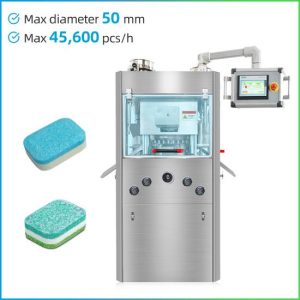Properly identifying the features you need in a blister packing machine can mean the difference between seamless operation and a logistics nightmare. A concentration on what you should consider, this guide is aimed at making sure that you generate the best return as possible.
Figure out the Capacity and Speed of the Machine
Blister Packing Machine Production Volume Needs: The production capacity of blister packing machines can be as low as 50 packs per minute to around 200 packs per minute or more. Smaller machines might produce up to 200 blisters per minute, while larger, more sophisticated machines can produce 1,200 blisters per minute. Determine the speed and size of the machine according to the requirement of daily production.
Flexible and Adaptable: Obviously, target machines that allow for minor changes in blister size and depth, so as to accommodate a variety of product sizes. Such versatility is essential for firms that package all types of products.
Automation & control systems Evaluation
Degree Of Automation: The full automation for the blister packing machine for production improves production efficiency and reduces labor costs. These can include equipment such as robot integration for part loading and unloading to simplify the process, and in return, to significantly increase part quality consistency.
U.I: The new machines come equipped with touch screen auto controls that make the set up and operations smooth. Pipeline provides | Real-time feedback and diagnostics to quickly fix operational issues.
Check Sealing and Material Flow Characteristics
Seal Integrity - Proper sealing is essential in blister packaging; it helps your product to be protected and have a long shelf life. With the help of these machines, you achieve strong even seals, without damaging the product which happens by the control of the temperature and also the pressure varies from one to the other; only high quality machines have exact temperature and pressure settings.
Material Versatility:A good blister packing machine ought to be capable of packing range of supplies like PVC, PVC PVDC, ALU / ALU, PET blisters, depending on altering business needs. This enables the packaging to be flexible in design and to adhere to a variety of product parameters.

Emphasis on Machine Reliability & Maintainance
Build Quality: A machine with good build quality will last a lot longer and is less likely to break and require maintenance to fix it. Hygiene - Many applications have to guarantee utmost hygiene which is why stainless steel components are used for their physical strength and ability to resist corrosion (which is particularly important in pharmaceutical and food industry applications).
Ease of Maintenance: Consider machines that have been built with serviceability in mind so your staff can quickly access components. Easy-to-clean machines that do not require regular maintenance ensure less downtime and operating costs.
Cost and ROI Analysis
Initial Investment vs. Operating Cost: While the initial investment will be important, consider the total cost of ownership with repairs and replacement of parts, and how well the equipment operates. A cheap initial purchase of a machine that is always being repaired can add up to cost more over time.
Production Speed: A machine that makes your production line move faster while maintaining quality can pay for itself quickly. I will include efficiency metrics such as especially reduced energy requirements/waste production.
Making an Informed Decision
The features of a blister packing machine you must choose depending on a close evaluation of your production needs, the machine's quality, and the probable return on investment. By choosing the right machinery, you are able to automate your packaging wheels, reduce your expenses and keep your standards at the heights. The right equipment is so much more than a cost; it is the most significant thing to determine for your manufacturing operation.